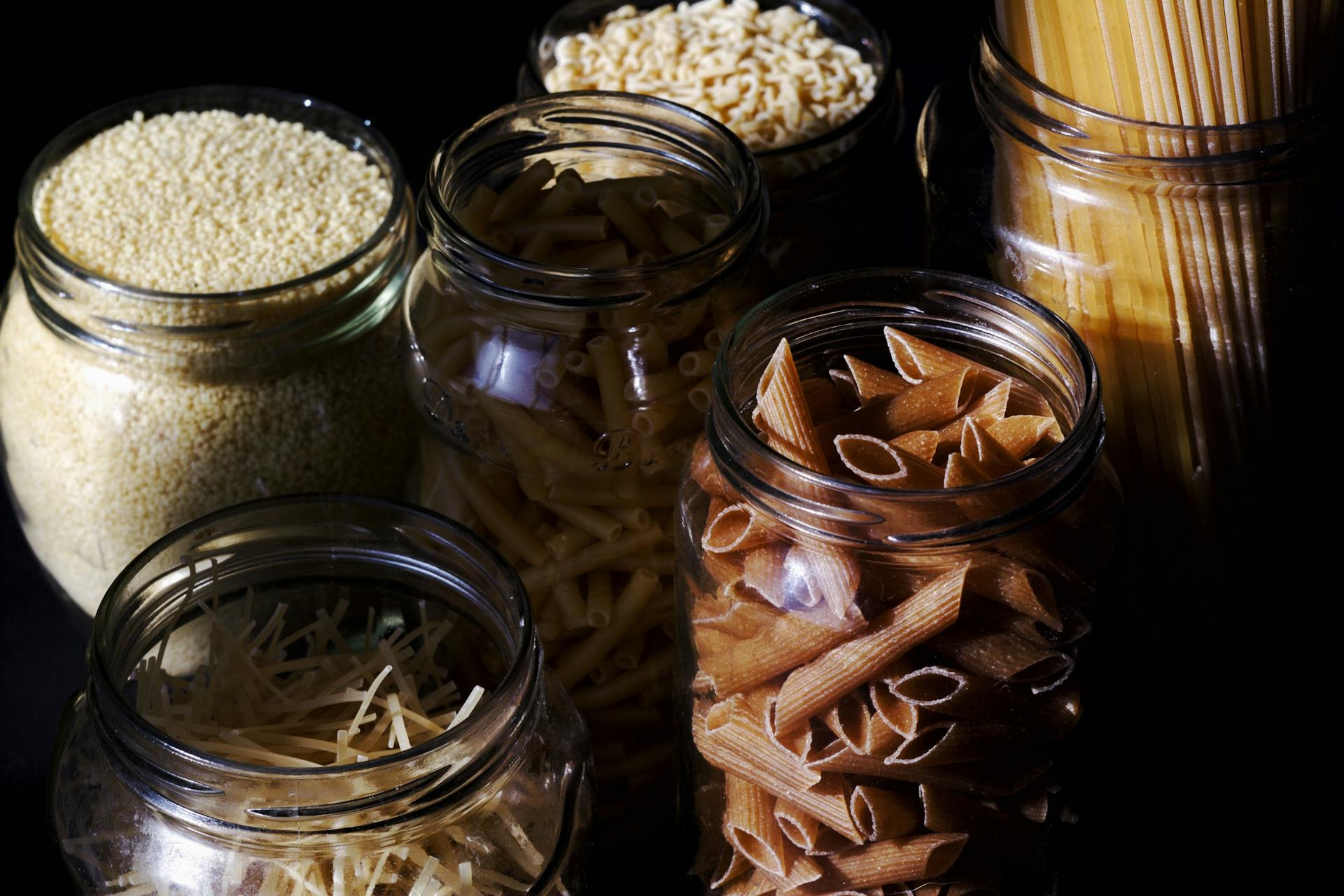
When it comes to knowing when to start feeding your puppy dry food, the right answer depends on their age and type of food. Dry food for puppies should typically be mixed with a little water to give them the necessary hydration, since kibble may contain as little as 10% moisture. At first, it can be a good idea to moisten the food so that it's easier to digest and won't irritate young puppies’ stomachs.
Generally, puppies can start eating dry kibble without water from the age of 4-6 months. After around 6 weeks of age, your pup’s body should be able to process and digest the protein in kibble without having to add extra moisture. Once your pup is old enough and their digestive system is developed and strong enough, they should switch over from wet or paste-like or semi-moist diet meals to dry kibble with no added water.
It's important to gradually transition your pup onto dry kibble; doing so too quickly can put stress on their digestive system. Transitioning gradually – usually over a period of 1-2 weeks – allows the microorganisms in your paet’s digestive system to adapt without inflicting discomfort or making them ill from the sudden change in diet. Start by blending wet and dry foods together; gradually decrease the amount of wet food you add until it's completely omitted all together.
Regularly check on how much support your puppy needs when eating food and pay attention to if they’re drinking too much or eating excessively fast; both are signs that they could benefit from having their dry food moistened before feeding time. Always consult your veterinarian if you’re ever unsure about when makes most sense for you pup to transition onto eating dry foods outright!
Recommended read: Kosher Food
What is the recommended age for puppies to begin eating dry food?
When it comes to making the decision about when to switch a puppy’s diet from wet food to dry food, the guidance of a veterinarian should be sought out. Generally, puppies can begin eating a high quality, age-appropriate dry puppy food three or four weeks after they're weaned from their mother's milk.
Transitioning puppies onto solid kibble should be done gradually and with care. It's a process that should take time — four days to one week — to complete. At 8 weeks of age, some puppies may begin eating all dry food, while for others it could happen as late as 10 or 12 weeks of age.
When switching your pup from wet food to dry food, start with small portions and moisten the kibble with water or warm broth until your pup gets used to it. Offer several small meals throughout the day as this helps to prevent over-eating which can cause digestive stress in pups. And make sure that the kibble you choose is specifically designed for puppies. It will have the correct balance of protein, fat, carbohydrates and essential nutrients that help ensure healthy growth and development in young pups.
Questions about when your puppy should start eating solid foods? Ask your vet! Puppies are fragile young creatures who require highly nutritious foods during their formative years and they need support during the transitionary period when they move away from dependence on their mother’s milk towards adult foods.
Explore further: Sells Jalapeno Poppers Fast Food
How much water should be added to dry puppy food to make it easier to digest?
When feeding your dog dry kibble food, it is important to have the correct amount of water to ensure that they are able to digest it properly and avoid any digestive issues. But how much should you add and how often? Here’s what you need to know.
First and foremost, always check with your veterinarian before making any changes to your dog’s diet. While water is an important part of a healthy diet for dogs, the amount that you add should depend on age and health condition. Puppies will typically require more water than an adult dog because their body weight is lower in comparison, however a senior dog may need even more because their metabolism will have decreased.
In general, you can use a ratio of one-third kibble, two-thirds liquid when preparing food for your pup. This means if you are feeding your puppy one cup of dry kibble per day, you can add up to ⅔ cup of water per meal. And if it’s wet or canned food that you’re using then only very minimal amounts may be needed—generally no more than one tablespoon per meal.
You should also consider the type of food that you are feeding when determining the amount of water to use. For some foods like raw diets it may not need any additional hydration when served at room temperature; whereas others like freeze-drying can take up much more H2O—so always follow the directions on the package whenever applicable. Additionally, keep in mind that dogs do best having access to fresh drinking water at all times so make sure they have plenty available—this is especially important during hot weather and active playtime!
Discover more: Dogs Eat Rice
Is wet or dry food better for puppies?
When it comes to puppies and the debate over whether wet or dry food is better for them, the answer is a bit complicated. For starters, puppies are growing at an incredible rate and need plenty of nutrients to support that process which makes it important for owners to analyze their pup’s nutritional requirements and compare them to what is available from food manufacturers.
Wet food is often more expensive than dry food, but the added moisture content creates a much healthier main course. It’s also known to be very palatable even for picky eaters. Wet food has higher water content which means puppies can stay hydrated without needing as much extra water flavorings. Unfortunately, wet foods may contain bacteria due to their natural moisture and need to be stored properly in order to ensure its freshness.
Dry foods, on the other hand, are much cheaper than wet foods and often come with fewer added ingredients. This could be beneficial if your pup has sensitive stomachs as they’re less likely to cause digestive issues like gas or diarrhea due to a lack of preservatives or additional flavoring agents. The downside of dry food is that it doesn’t always offer sufficient nutrition on its own and needs supplementary treats in order for your pup to not be missing out on any essential vitamins or minerals. Another downside of dry foods is that, as puppies get older and need larger kibble sizes but may not be able to chew them properly, so owners should take this into consideration when deciding which type of food best suits their pup's needs.
No matter what you choose—wet or dry—make sure you consult with a vet beforehand so you can make sure your pup gets all the nutrition they need during this crucial growth period.
What is the best type of dry puppy food to buy?
When it comes to buying the best type of dry puppy food for your beloved pup, there are a few key things to consider. First off, think about your pup’s size, age and breed. Once you have this information handy, consider your pup’s lifestyle and activity level. Then, review the nutrients and ingredients list of the food you are considering purchasing.
For puppies, look for foods high in animal-based protein sources such as chicken or fish as they provide the essential amino acids puppies need to grow strong bones and muscles. Furthermore, ensure that your puppy food has enough fat content derived from healthy sources such as eggs, fish or flaxseed oil. Always double-check that there are no added fillers or low-quality ingredients listed on the packaging.
Another factor to always remember is that puppies may need more than one type of dog food throughout their life, depending on their needs at any given stage. For example, kittens that are very young should be fed specially formulated products tailored for their growth needs with optimal levels of calcium, phosphorus and other essential nutrients. Large breed puppies may require specialized formulations with fewer calories and moderate levels of fat for proper growth rates. Ultimately this could mean having more than one bag of food stored away for different stages in life!
It is highly suggested to also speak with your veterinarian before deciding on a particular brand as they can advise you on what nutritional requirements matter most at each stage in your pup’s life. In any event, look for foods made with premium ingredients that have met AAFCO (American Association of Feed Control Officials) guidelines in order to make sure you’re getting top quality dry puppy food for your precious pup!
Do puppies need to drink extra water when eating dry food?
Dry dog food is a common and convenient way to feed your pup in place of home-prepared meals or wet food. To make sure your pup is getting an adequate amount of hydration when eating dry food, it is important to supplement water in its diet.
When puppies and adult dogs eat dry food, their bodies don’t get nearly as much hydration as they do when they eat wet or canned food. This is because dry food contains a very low percentage of moisture—typically 7 - 10%. Due to this lack of moisture, it is recommended that all pups who consume a diet primarily consisting of dry food need supplemental water to remain healthy and hydrated. This can be done with fresh water bowls consistently placed throughout the home, multiple short walks throughout the day for potty breaks and adding wet or canned dog food into the daily meals at least once a week.
Fortunately, extra water intake comes with many positive effects for pups – from promoting healthy joints and improved digestion to smoother skin and coat health. All these improvements come with consistent hydration that must encouraged when feeding any type of dry dog kibble. So, long story short – the answer is definitely yes, puppies need to drink extra water when eating dry food!
Featured Images: pexels.com


